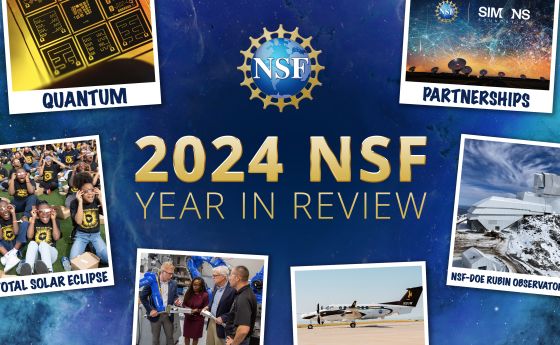
NSF 101: The Graduate Research Fellowship Program
Is graduate school in your future? Pursuing a PhD or master’s degree in science or engineering is an intellectual journey, opening doors to many career paths in academia, industry and beyond. The U.S. National Science Foundation can help fund your graduate education and kick-start your career. The Graduate Research Fellowship Program, or GRFP, is one of NSF’s oldest programs. Fellowships were first awarded in 1952 and predate NSF’s first awards for research grants.
GRFP is a prestigious program that supports outstanding graduate students pursuing research-based master’s and doctoral degrees in over 100 NSF-supported STEM fields. Every year, nearly 14,000 applications are received for about 2,000 fellowships. Fellowships comprise three years of financial support that can be used over a five-year period at accredited U.S. institutions, including an annual stipend of $34,000 and a cost-of-education allowance of $12,000 that graduate institutions agree to accept in lieu of charging tuition and fees.
Thousands of former GRFP fellows have gone on to become leaders in their chosen field, with several being honored as Nobel Laureates and members of the National Academies.
Here are five tips from a program officer to help you with your NSF Graduate Research Fellowship Program application:
1. Do your homework
One of the keys to your success is to read the entire program solicitation. It is a comprehensive list of instructions that will lay out exactly what you need to do to have a successful application. Make sure to read it twice!
If you have a research or academic mentor, have a conversation with them about your goals for your graduate training and subsequent career. This will help you organize ideas and formulate a strong narrative about your credentials and career goals in your application. Your mentor might also be willing to review drafts of your application or be able to connect you with a former Fellow for more advice.
2. Know your timelines
Each year the GRFP application portal opens between late July and early August. Application deadlines vary by discipline but generally fall in mid to late October of each year. GRFP regularly updates specific deadlines on its website. Writing a GRFP application is not a small task, but planning ahead can give you time and space to craft a competitive application and your references time to write their letters.
You can apply during your undergraduate study or up to your second year in a graduate program. If you have already earned a master’s degree -- excluding one that you earned in a joint BS/MS program -- you may not be eligible to apply unless there has been a longer than two-year break in your graduate studies. If you are still unsure whether you are eligible, use the GRFP questionnaire.
3. Help references help you
In your GRFP application, you can submit names of up to five references. A minimum of three references are required, and two letters of recommendation must be received. Anyone can serve as a reference for your GRFP application, as long as they are not a family member. The best reference writers will be those who can provide detailed and specific information about your potential for success in graduate education and beyond.
Help your reference letter writers by giving them details about GRFP and why you are applying. Provide them with drafts of your personal statement and graduate research plan statements, along with your CV and other relevant materials. Remind them of big accomplishments that can provide some direction for crafting your letter.
4. Know your reviewers
Your GRFP application requires two statements: a Personal Statement that encompasses relevant background and future goals, and a Graduate Research Plan Statement; both should be written to reflect both intellectual merit and broader impact criteria.
Your Personal Statement is for reviewers to get to know you. How is your personal story different from other applicants? Describe any research experiences you may have that highlight your personal qualities. You can also detail challenges you overcame or significant contributions to science or society your work has made.
In your Graduate Research Plan statement, avoid being too focused on specifics or overly technical. Instead, focus on the rationale for your studies and how they fill a gap in the literature. GRFP reviewers are generally experts in your general field, but it is unlikely they will have deep knowledge of your specific proposed research topic.
5. It's all in the details
The program solicitation provides detailed instructions about the technical aspects of the application, like page limits and font sizes. Despite this, over 800 applications are returned to applicants each year due to formatting errors or missing documents. For example, the page length for the Personal Statement is three pages, and the Graduate Research Plan is two pages, including all references, citations, figures and other materials. Double check these details before starting, and again before submitting, to make sure your application is submitted without error.
Try to avoid submitting the application at the last second, especially if you are unfamiliar with the interface or might have unexpected internet connectivity issues. Certain formatting errors will be automatically rejected by the system, so submitting early will leave you extra time to make any required changes. The GRFP has created a video to help you navigate the technical processes of submitting your application.
NSF’s GRFP can be a transformative opportunity for young scientists and engineers to kick off their graduate training. If you have additional questions about the program, visit the GRFP website or email info@nsfgrfp.org. Good luck with your application!



